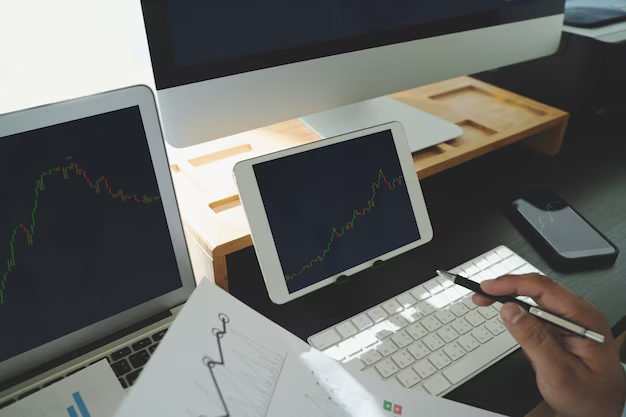Understanding ETF Investment Funds: A Comprehensive Guide 🌍
In the ever-evolving landscape of investing, Exchange-Traded Funds (ETFs) have become a prominent choice for a wide range of investors, from seasoned financial experts to everyday individuals looking to grow their wealth. But what exactly is an ETF investment fund, and why has it garnered such widespread popularity?
Let's dive into the world of ETFs and uncover the essentials, the benefits, the potential downsides, and why it might be worth considering for your portfolio.
📊 What is an ETF?
An Exchange-Traded Fund (ETF) is a type of investment fund that is traded on stock exchanges, similar to individual stocks. It holds assets such as stocks, commodities, or bonds and generally operates with an arbitrage mechanism designed to keep trading close to its net asset value, though deviations may occasionally occur.
Core Features of ETFs
- Tradable on Stock Exchanges: ETFs can be bought and sold throughout the trading day, unlike mutual funds that trade only at the end of the day.
- Diverse Asset Holdings: They can include a mix of asset types, providing broad market exposure.
- Variety in Investment Focus: ETFs can focus on specific sectors, commodities, or regions, or replicate stock indices.
💡 Why Choose ETFs?
The decision to invest in ETFs often stems from their unique advantages:
1. Diversification
ETFs provide an easy way to diversify your portfolio. By buying a single ETF share, you are essentially acquiring a piece of a larger pool of investments. This diversification can help reduce risk by spreading exposure across various assets.
2. Flexibility
Unlike mutual funds that require end-of-day trading, ETFs can be bought or sold whenever the market is open. This flexibility means investors can respond to market trends and conditions in real-time.
3. Cost-Effectiveness
ETFs generally offer lower expense ratios compared to mutual funds. This is largely due to their passive management nature, often tracking an index rather than using active management strategies.
4. Tax Efficiency
ETFs are considered tax-efficient, as their structure allows for fewer capital gains distributions compared to mutual funds. This can mean fewer taxes for investors to pay over time, enhancing after-tax returns.
🌐 Types of ETFs
ETFs are as varied as the investments they hold. Here’s a look at some common types:
1. Stock ETFs
These ETFs aim to replicate the performance of a specific index, such as the S&P 500. They're ideal for investors seeking exposure to the broader stock market or specific market segments.
2. Bond ETFs
Focusing on bonds, these ETFs might include government, municipal, or corporate bonds and are typically used by investors seeking regular income from interest payments.
3. Commodity ETFs
These track commodities like gold, oil, or agricultural products. They allow investors to diversify with physical goods without the need for storage or significant capital.
4. Sector and Industry ETFs
These focus on specific sectors of the economy, like technology, healthcare, or energy, allowing investors to target specific segments.
5. International ETFs
Providing exposure to non-domestic markets, international ETFs help investors take advantage of growth opportunities outside their home country.
📈 How to Invest in ETFs
Investing in ETFs is straightforward, but strategic planning can optimize results:
1. Research
Understanding your financial goals and risk tolerance is key. Analyze different ETFs to find those that align with your investment objectives. Consider factors like performance history, expense ratios, and underlying assets.
2. Open a Brokerage Account
You'll need a brokerage account to trade ETFs. Compare different brokers to find one that suits your needs, considering fees, trading tools, and customer service.
3. Develop a Strategy
Decide on a strategy that incorporates ETFs to achieve diversification that aligns with your risk tolerance and investment horizon.
4. Monitor Your Investments
Continuously assess your ETF investments, keeping an eye on market conditions and making adjustments as necessary. Rebalancing your portfolio is crucial to maintaining desired asset allocations.
⚖️ Potential Risks and Considerations
Like any investment, ETFs are not without risks:
1. Market Volatility
Since ETFs contain a basket of securities, their value can fluctuate with market conditions, leading to potential losses.
2. Tracking Error
ETFs aim to replicate an index’s performance, but discrepancies (known as tracking errors) can occur, affecting returns.
3. Liquidity Concerns
While many ETFs trade like stocks and have ample liquidity, some less popular or narrowly focused ETFs may not trade as frequently, leading to wider bid-ask spreads.
4. Complex Products
Leveraged and inverse ETFs are more complex, carrying higher risk due to their aim to amplify or provide inverse market returns. These are more suitable for experienced investors.
🔑 Key Takeaways and Practical Tips
Here's a snapshot of what to keep in mind when considering ETFs:
- Diversify Wisely: Use ETFs to gain exposure to a wide array of asset classes and geographic regions.
- Mind the Costs: Focus on ETFs with low expense ratios to maximize your investments' potential returns.
- Stay Informed: Keep track of news, economic trends, and market developments that may impact your ETFs.
- Assess Risks: Evaluate the risks associated with specific ETF types before investing.
Essential Tips for Beginners
- Start Small: If you're new to ETFs, begin with broad-market ETFs which are less volatile.
- Consult a Financial Advisor: If uncertain, a financial planner can help tailor an investment strategy to meet your needs.
- Use Dollar-Cost Averaging: Regular investments can reduce emotional reactions to market fluctuations.
📚 Understanding and Leveraging ETFs
ETFs offer a blend of the best features of stocks and mutual funds, combining tradeability with diversification and cost efficiency. However, choosing the right ETF requires diligent research and a clear understanding of your financial goals. With the potential for substantial growth, careful investment in ETFs can be a key component of a balanced and prosperous investment portfolio.
Remember, as with any investment decision, informed choices based on personal financial situations and market understanding are paramount. Always consider consulting with financial experts if you're venturing into ETFs for the first time. Happy investing! 📊🔍
